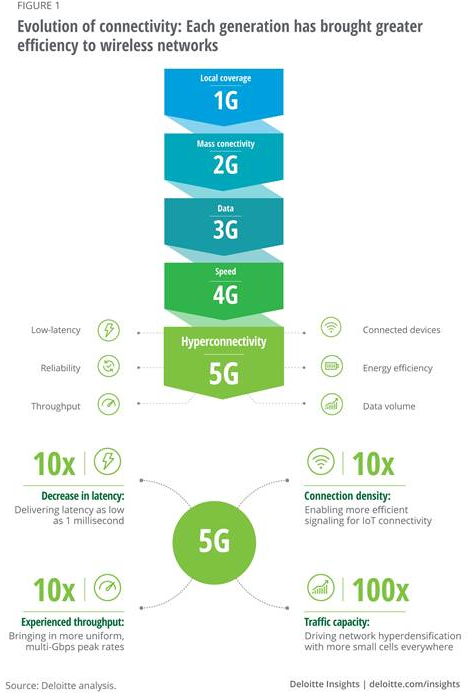5G Machine Learning
True, 5G, short for fifth-generation wireless, is up to 100 times faster than current 4G connectivity. But even though 5G is still in its infancy, the technology has the potential to reshape how companies in a range of fields manage their technology—everything from factory floors to farming.
5G uses higher frequencies and a much broader chunk of the radio spectrum than previous generations—which means that it can send more data more quickly, and to more devices, than has been possible in the past. That creates the potential to open up new business models, in which more wirelessly connected data-gathering sensors and intelligence are deployed in the field.
One early use of the technology is enabling the enhanced use of robotics and automated devices on factory floors. Machines can be operated remotely with much more ease because there isn’t as much lag in their performance, and they can be linked together and managed much more easily.
The network’s edge
 Many of these 5G applications are based on the idea of edge computing, in which a combination of sensors and analytical software can be deployed even in remote locations, such as farms or other rural areas.
Many of these 5G applications are based on the idea of edge computing, in which a combination of sensors and analytical software can be deployed even in remote locations, such as farms or other rural areas.
Edge computing allows information to be processed at the point it’s collected rather than having to travel to central servers—but it will require 5G to facilitate its vast data and connectivity requirements. Convoys of autonomous vehicles, for example, require fast and stable connections to receive necessary data, such as traffic updates, information on road conditions and vehicle status.
Artificial intelligence and the burgeoning array of connected devices known as the Internet of Things, too, will substantially benefit from 5G’s speed and capacity. Sensors used widely in smart cities to measure a wide array of conditions will require 5G’s connectivity to function on the scale required, for instance, although these technologies are still early-stage, and will take time to develop.
